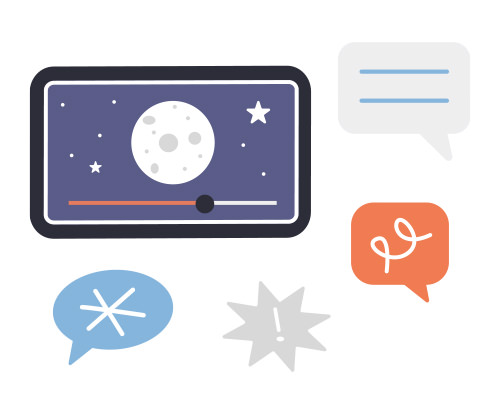Blog
Flipping the Script: What Are Flipped Classrooms and What Utility Do They Have in Education?
on May 18, 2023

When you think of a traditional classroom, what comes to mind?
Most likely a teacher standing at the front of the class, delivering a lecture while students follow along in their textbooks and take notes that they use to complete assignments at home.
This model works… to a point.
But when you honestly think about it, many students struggle to adopt this method – think about the number of kids you knew at school who couldn’t focus at all during their classes.
However, over the last decade, a new approach to teaching has emerged that flips this model on its head – the flipped classroom.
Below we’ll explore exactly what that means and the benefits associated with it.
What Is a Flipped Classroom?
A flipped classroom is an instructional approach that reverses where traditional lectures and homework take place.
Instead of being lectured at school, students watch pre-recorded in their own time, usually through videos or other online materials, and then complete assignments during class time.
This model allows for more interactive and collaborative learning in the classroom, as well as greater flexibility for students to learn at their own pace.
Since students are used to absorbing knowledge and data through their personal devices, they’re more likely to be comfortable with the flipped model than a traditional one.
The Benefits of Flipped Classrooms
We’ve broadly outlined the benefits of using the flipped classroom model, but let’s take a look at those benefits in more detail.
1. It Provides a More Personalized Learning Experience
One of the primary benefits of the flipped classroom model is that it allows for a more personalized and engaging learning experience for students.
Unlike traditional classrooms where the student has to sit through lectures that may or may not engage them, in a flipped classroom, the student has access to instructional materials ahead of time and can learn at their own pace.
This means that in the classroom, students can dedicate more time to working on activities and assignments that are tailored to their particular needs. This also frees up way more time for the teacher, who can then dedicate their classroom time to providing personalized attention to whichever student needs the most help.
2. It Encourages Greater Collaboration
How many times were you told to stop talking to your fellow classmates in school?
What if I told you that the flipped classroom model actually encourages this kind of interaction?
Rather than spending class time listening to lectures, students can engage in discussions, group work, and other interactive activities that help them apply what they’ve learned and, in the process, develop critical thinking skills.
3. It Allows All Students to Learn at Their Own Pace
In traditional classrooms, some learners understand concepts immediately, while others need more time and repetition.
In a flipped classroom, learners are able to take as little or as much time as they need on any of the topics being taught.
They’re able to pause, go back, and replay any parts of a lesson if they need to.
If they find that they understand a section of the curriculum particularly well, they can simply move on to the next one. But if they find a chapter quite tricky, then they can spend as much extra time as they need to understand it.
4. It’s More Efficient as Students Are Already Prepared
Since students spend time at home going through coursework and videos, they’re much more prepared by the time they actually set foot in the classroom.
This means that school time can be utilized much more effectively. Rather than spending the bulk of the time lecturing, teachers can now spend their time giving students who need individualized attention.
5. It Saves Time for the Teachers
Flipped classrooms give teachers the options to either record video lectures themselves or source them from third parties. Both options give teachers much more flexibility when it comes to structuring and teaching their lessons.
Having the lectures pre-recorded and hosted online also means that teachers don’t have to give the same lectures again and again.
This means they ultimately have more time to walk around the classroom and spend one-on-one time with students, furthering their retention and enriching the student-teacher relationship.
Flipping Offers the Chance to Create More Engaging Education
The flipped classroom model is an innovative approach to teaching that has gained popularity in recent years.
By allowing students to learn course content outside of class time and engaging in collaborative and interactive activities during class time, this model has the potential to create more engaged and personalized learning experiences for students.
And while it might not be suitable for all classrooms, it is ideal for microschools, freelancers, tutors, and other alternative forms of education.
